Fitness Center Floor Plans: Ideas for Indoor and Outdoor Spaces
A great fitness center layout helps members move easily between workouts and amenities while keeping the atmosphere inviting. With smart planning and clear zoning, you can create a space that supports every type of workout.

Fitness centers and gyms are designed spaces where people can exercise, improve their health, and stay active. A fitness center floor plan often includes both indoor and outdoor areas, while gyms are usually limited to indoor setups.
Inside, you’ll find cardio machines, weight training zones, and group class rooms for yoga, Pilates, or Zumba. Many also provide locker rooms, showers, and sometimes saunas or steam rooms. Outdoors, fitness centers may feature swimming pools, sports courts, running tracks, or open-air training spaces.
If you’re planning a functional and user-friendly fitness center, here are some key considerations to guide you.
The Indoor Space
Designing the indoor layout of a fitness center requires thoughtful planning to ensure a seamless and enjoyable experience for your members.
Size
It’s essential to assess how many people you anticipate using the fitness center simultaneously and the range of equipment and services you plan to offer.
A well-proportioned space allows for the proper placement of equipment and sufficient room for members to exercise comfortably without feeling cramped.
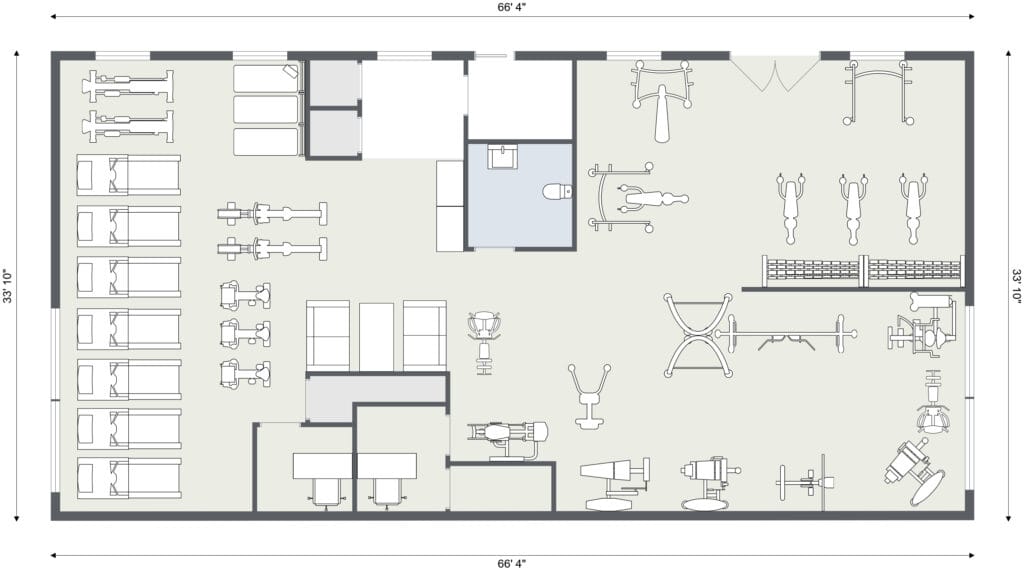
Efficient layout
A well-thought-out layout is crucial to ensure the fitness center is easy to navigate and promotes smooth traffic flow.
Strategically arrange the exercise equipment to prevent congestion and avoid potential collisions between members.
Create designated zones for different types of equipment and activities to maintain order and enhance the overall workout experience.
For example, a zone with floor mats for sit-ups and stretching, a zone for equipment, a zone for free weights, and so on.
Equipment selection
Selecting the right mix of equipment is pivotal in catering to the needs of your target audience.
For a diverse clientele, including cardio machines, weight machines, and free weights is essential to accommodate various fitness preferences and goals.
If you are targeting specific groups, such as athletes or seniors, consider incorporating specialized equipment tailored to their unique needs.
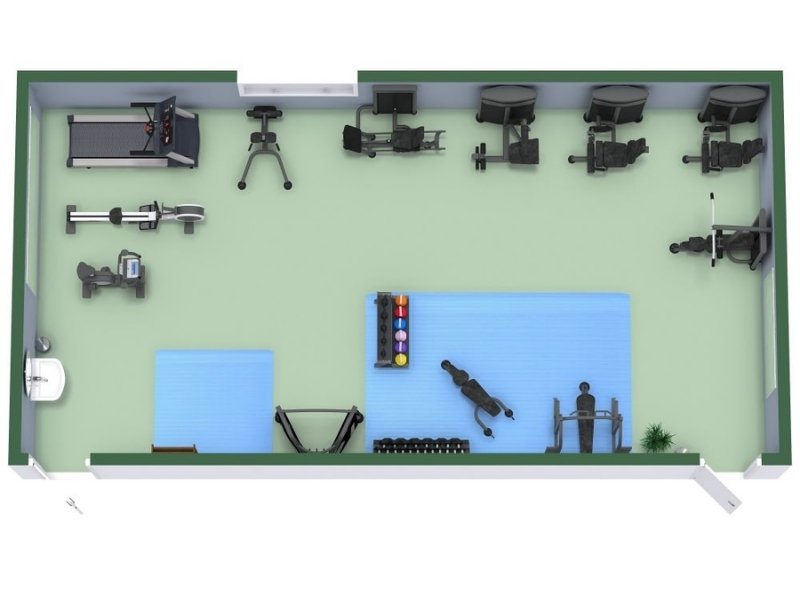
Amenities
The inclusion of amenities like locker rooms, showers, and restrooms is a standard expectation for most fitness centers.
These facilities not only enhance convenience but also promote a sense of comfort and hygiene for members.
The Outdoor Space
When envisioning the outdoor site plan for your fitness center, careful planning is essential to create an engaging and safe environment for your members. Here are some key considerations to keep in mind:
Space size and exercise areas
Determine the size of the outdoor space available for your fitness center floor plan. Based on this, identify the key exercise areas you wish to incorporate.
Consider including a variety of options, such as a swimming pool, a warm water exercise pool, a jacuzzi, outdoor fitness equipment, a running track, a parkour fitness track, and even a challenge course in a Ninja Warrior-inspired setup.
Outdoor-rated equipment
Ensure that all the equipment you select is specifically designed and rated for outdoor use. This will help prolong its lifespan and ensure safe usage under various weather conditions.
Familiarize yourself with the correct placement, spacing, and signage requirements to meet necessary safety and usability standards.
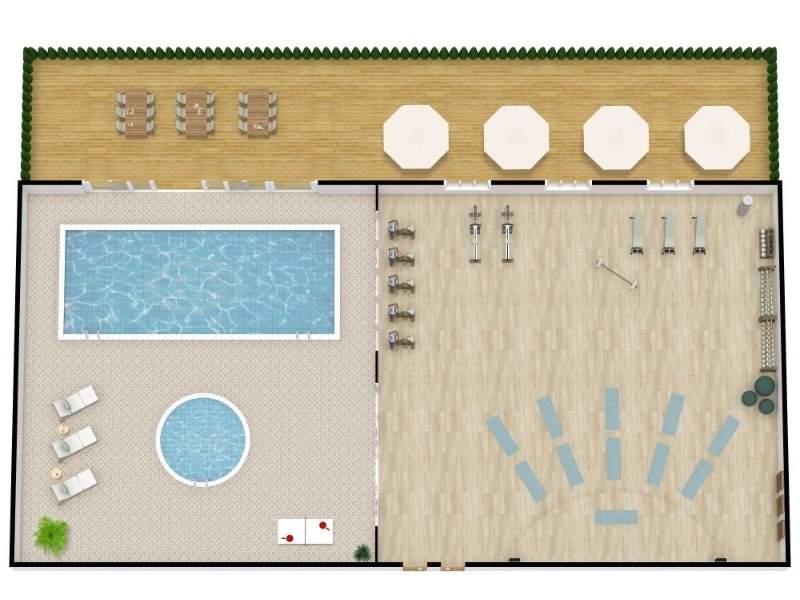
Target Audience
Tailor the outdoor space to cater to the preferences and needs of your target audience.
Consider factors such as age groups, fitness levels, and accessibility requirements when choosing the types of exercise areas and equipment.
A well-designed outdoor space that meets the specific interests of your clientele will enhance their overall experience and encourage regular visits.
Shade and weather protection
Provide ample shade and weather protection elements to ensure that members can comfortably use the outdoor fitness area in various weather conditions.
This may include trees, pergolas, umbrellas, or other structures that shield from the sun and light rain.
Lighting
To extend usability into the evening hours, consider incorporating appropriate lighting throughout the outdoor fitness area.
Well-placed lighting not only enhances safety but also creates a pleasant ambiance for nighttime workouts.
Accessibility
Make sure the entire facility is designed to be accessible to all members, including those with mobility challenges.
Incorporate appropriate pathways and ramps, and consider the overall layout to promote easy navigation.
Safety should be a top priority, so take measures to prevent trip hazards and ensure clear visibility of potential obstacles.
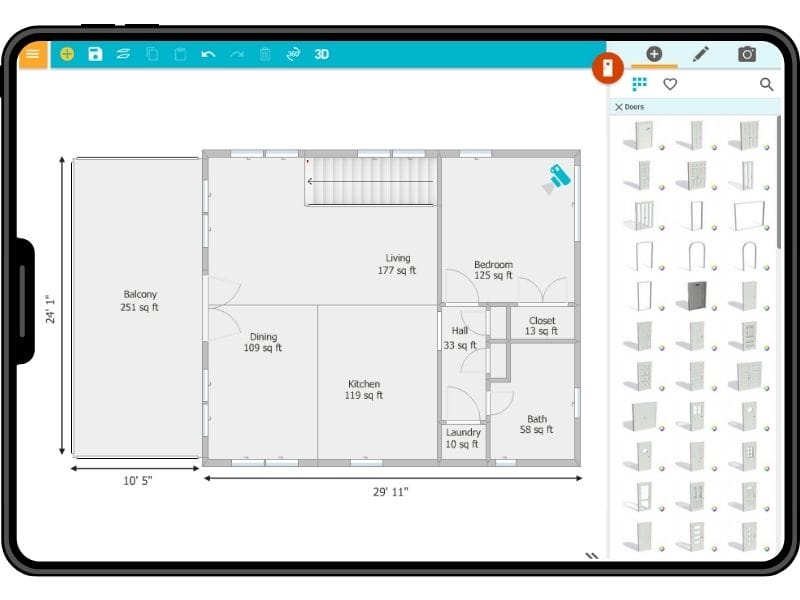
Create Your Floor Plan with RoomSketcher
With RoomSketcher, you can easily plan, visualize, and share your layout — no CAD skills required.
- Draw floor plans quickly and accurately
- Furnish with real gym and spa equipment
- Visualize your layout in 2D and 3D
- See your design in Live 3D for a walkthrough view
- Share your project with clients or contractors
Related Articles
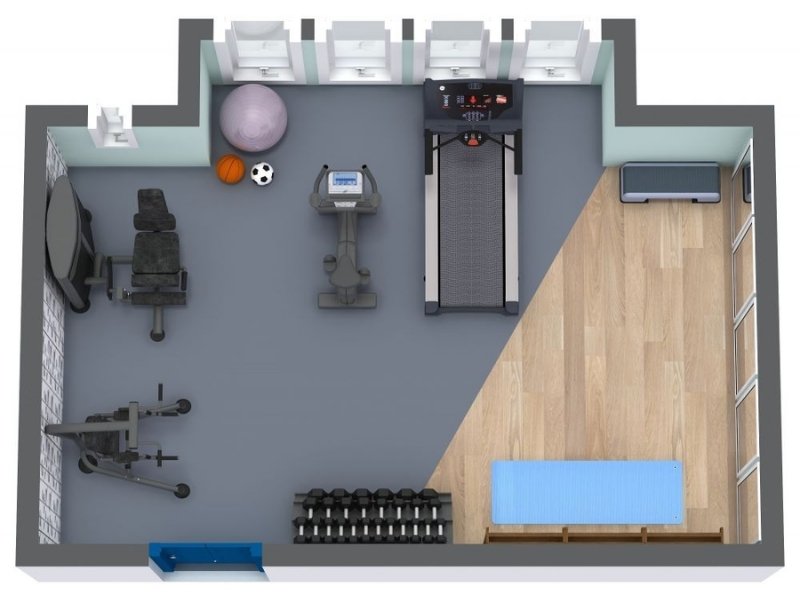
Smart Home Gym Layouts for Every Room Size
A home gym gives you the freedom to work out anytime in a space that’s comfortable and convenient. Before you buy equipment, it helps to plan your layout so it fits your exercise goals and your available space.

9 Best Commercial Floor Plan Software Tools
The best way to attract interest, test out different layouts, and communicate design intent is with floor plan software. But which one should you choose? We've made a list of the best options for you.
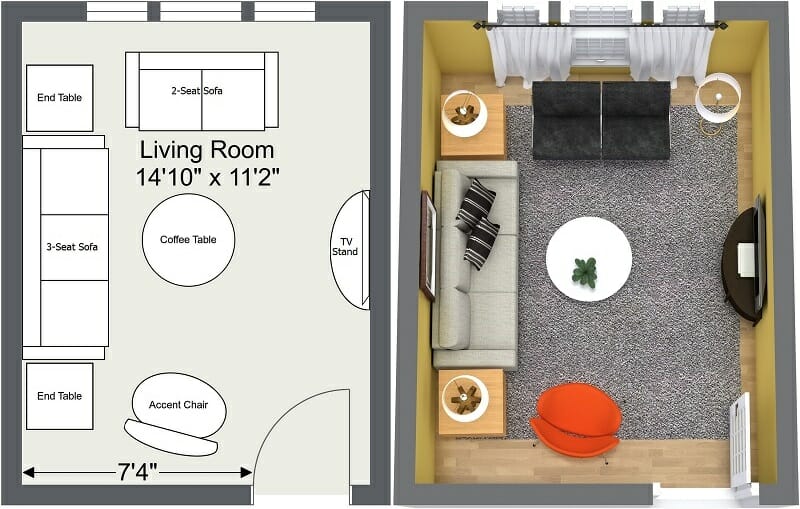
6 Simple Steps to Achieve the Best Furniture Layout
Today, we’ll discuss some ideas for creating the best possible furniture layout and how you can try out your furniture placement ideas without the heavy lifting!
